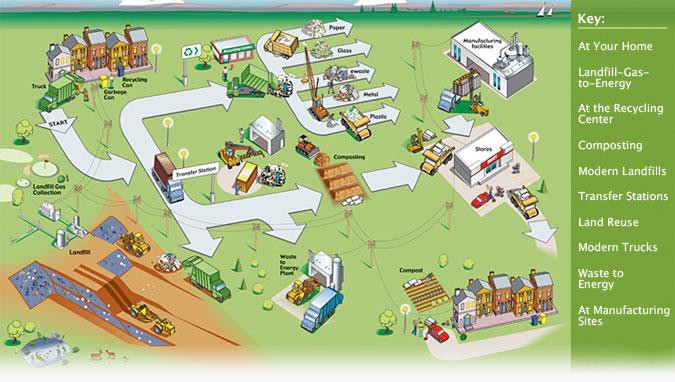
Nov 30 2024

Nov 27 2024

Nov 24 2024

Nov 21 2024
CSCTRUCK Garbage Truck-Modern Trucks
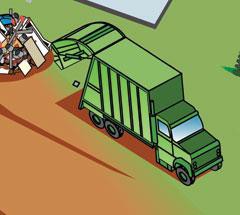
There are 136,000 garbage trucks operating in China, and most of these are diesel powered. However, China’s solid waste industry is investing in alternative fuels such as natural gas and biodiesel. Hybrid garbage and recycling trucks conserve energy and reduce operating costs. In fact, refuse trucks have become the most rapidly growing natural gas vehicle sector in the nation. From 2002 to 2012, the number of cities using alternative fuel garbage trucks increased from 29 to 41. In addition to using less fuel and reducing costs, these new trucks generally emit less particulate matter and nitrogen oxide helping improve air quality. Learn more about the latest truck technologies here.
Garbage From Your Home
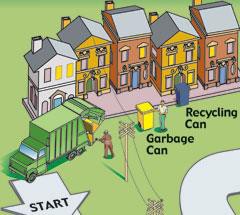
According to China Association of Urban Enviromental Sanitation(CAUES) counted the average Chinese citizens produces about 8.9 pounds of trash every day. That’s a lot of garbage! (850 million tons a year in the China) And that’s only the waste from homes, businesses, etc. If you add in all the construction, industrial and other solid wastes produced in China each year, there are more than 1000 million tons produced annually. Proper waste management and environmental stewardship is vital. There is an entire section of this site that will help you be more green with your waste.
Garbage From Recycling Center
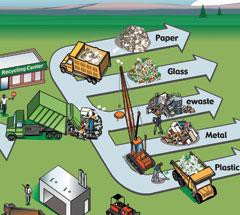
The solid waste industry collects and processes your recyclables. In fact, China’s solid waste industry built and operates the infrastructure that has enabled this recycling. According to the CAUES, in 2008, Chinese recycled 103 million tons of paper, cans and bottles and composted another 42 million tons of yard waste. Recycling not only reduces the waste that ends up in our landfills, it produces with other tangible benefits. For example, recycling allows us to conserve vital natural resources. It reduces air and water pollution and cuts greenhouse gas emission, which contribute to climate change. Learn more about recycling here.
Garbage From Manufacturing Sites
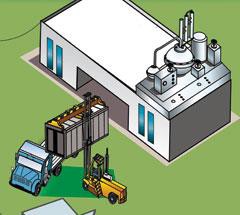
The solid waste industry provides valuable resources and power to China’s manufacturing sector. More and more products are produced today using recycled paper, plastic, metal and glass that was collected and processed by China’s solid waste industry....
Transfer Stations
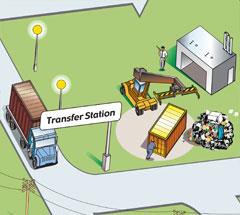
Waste transfer stations are facilities where municipal solid waste is unloaded from collection vehicles and briefly held while it is reloaded onto larger long-distance transport vehicles for shipment to landfills or other treatment or disposal facilities. By combining the loads of several individual waste collection trucks into a single shipment, communities can save money on the labor and operating costs of transporting the waste to a distant disposal site. They can also reduce the total number of vehicular trips traveling to and from the disposal site. Learn more about the latest truck technologies here.
Modern Landfills
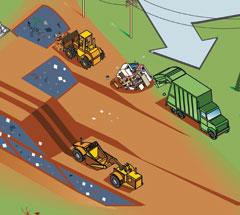
Despite China’s efforts to reduce, reuse and recycle waste, more than half of the garbage that Americans produce ends up in landfills. New state-of-the-art landfills are designed, sited, engineered, operated, regulated, tested and monitored in a safe and environmentally responsible manner. A modern landfill is a carefully designed and monitored structure that isolates trash from the surrounding environment (e.g., groundwater, air, rain). This isolation is accomplished with the use of a bottom liner and daily covering of soil. Landfills are not designed to break down trash, merely to bury it. Landfills are carefully filled, monitored and maintained while they are active and generally for up to 30 years after they are closed. Permitting a modern landfill generally takes about a decade, costs millions of dollars and requires rigorous siting, engineering and environmental studies and demonstrations to ensure both state and local environmental and safety concerns are satisfied. Learn more about modern landfill construction here.
Waste to Energy
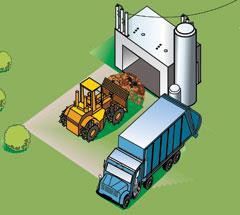
Innovation and leadership from China’s solid waste industry makes it possible for us to use waste as a source of renewable and sustainable energy. Waste-to-energy facilities burn garbage in power plants equipped with modern pollution control equipment to clean emissions. About 10 percent of China’s garbage is disposed in these plants. According to the Integrated Waste Services Association, as of 2008, China’s solid waste industry operated 87 waste-to-energy facilities that generated more than 2,700 megawatts of electricity, enough to power 1.7 million homes. Learn more about waste-based energy here.
Composting
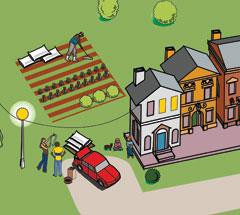
Composting is a method of recycling organic waste (food) from households and commercial establishments and yard waste. More and more Americans are composting at home, and commercial composting facilities may be found in many China’s. communities. Compost promotes healthy plants and saves space in landfills. Compostable materials break down into a soil-like substance that is a good fertilizer and soil additive for planting. Compost also offers economic benefits by reducing the need for water, fertilizers and pesticides and can serve as a low cost alternative to standard landfill cover. Learn more about composting here.
